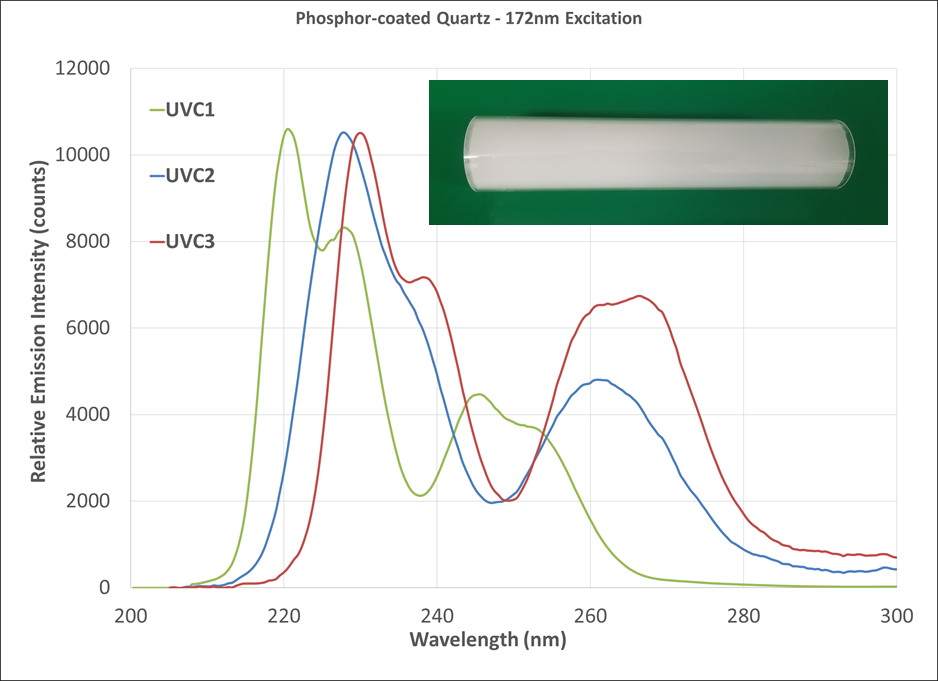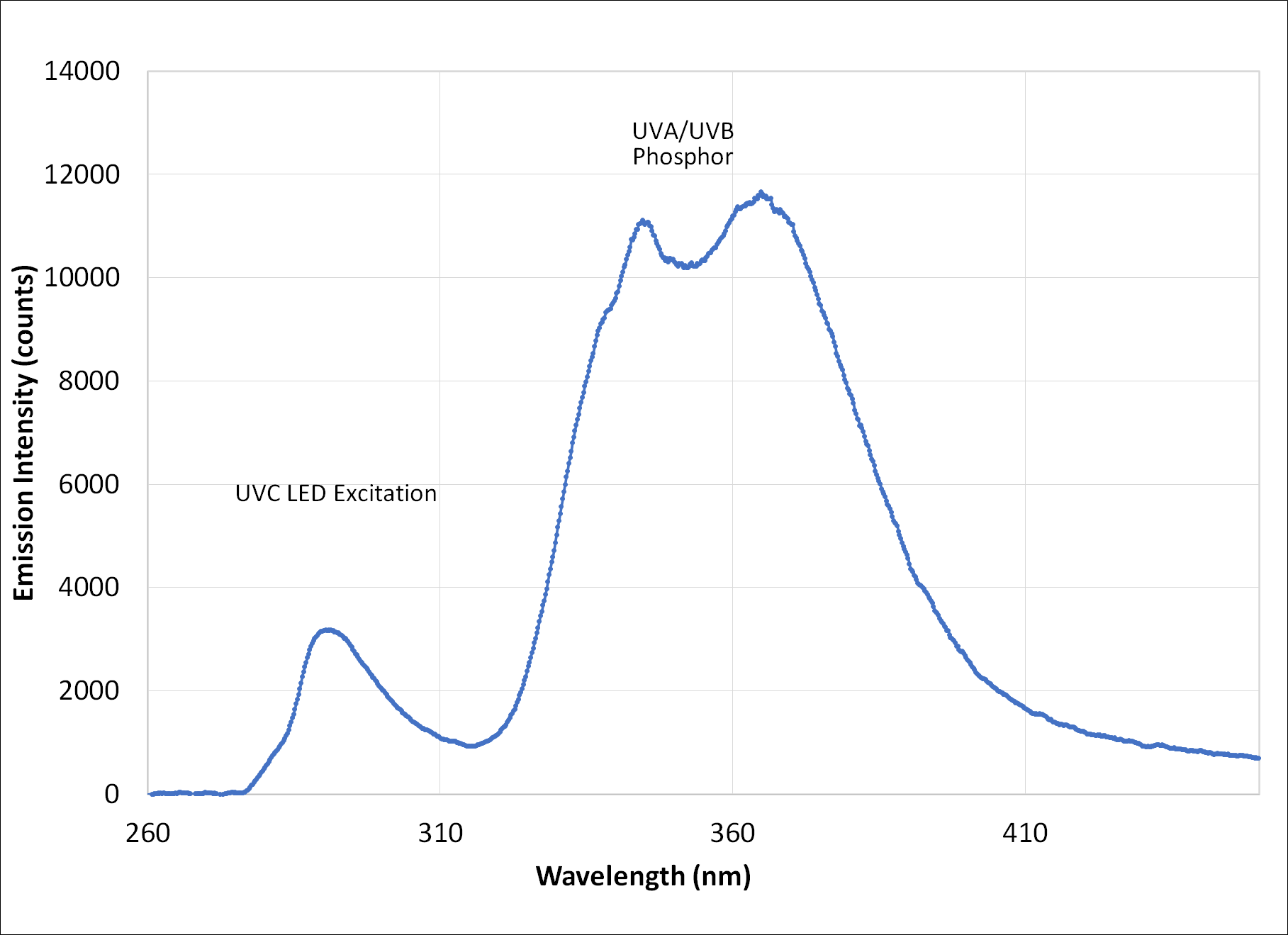We can offer several types of ultraviolet-emitting phosphors for the UVA (320nm-400nm), UVB (290nm-320-nm), and germicidal UV or UVC (200nm-290nm). The UVA/UVB spectral range has applications in polymer/resin photo curing, medical phototherapy, and suntan lamps while the UVC is often useful for solar-blind photodetectors and a wide range of germicidal applications.
The recent COVID-19 pandemic has highlighted the need for a safe, effective, and low-cost method for the rapid elimination of airborne diseases and disinfection of indoor/outdoor surfaces. UVC-emitting phosphors can play a crucial role not just in the disinfection of public surfaces and air but also in the purification of water supply lines, HVAC installations, and in medical sterilization. Phosphors can offer customized UV germicidal spectra for a wide range of disinfection applications.
Using plasma (dielectric barrier) discharge excimer lamps or electron beam excitation, it is possible to develop UVC phosphor devices that are mercury-free and environmentally friendly. A spectrally-tunable UVC phosphor lamp can even deliver radiation safe for mammals while having strong germicidal efficacy. Chronic 254-nm UVC irradiation (from traditional mercury discharge lamps) is well known to induce sunburn and desquamation in mammalian skin cells, while testing has repeatedly shown that even extremely high doses (5200 mJ/cm2) of 222nm radiation did not induce mutagenic or cytotoxic DNA lesions in living cells.[i]
[i] K. Narita, Chronic Irradiation With 222-nm UVC Light Induces Neither DNA Damage Nor Epidermal Lesions in Mouse Skin, Even at High Doses, PLoS One. 2018;13(7)
Below are some examples of spectral emission from UVC phosphors under 172nm excitation from an excimer lamp. Similar spectra can be produced using electron beam or cathodoluminescent excitation.

Below is an example of spectral emission from a UVA/UVB phosphor under 290nm excitation from an LED source.

Some of the available UVA/UVB-emitting phosphors